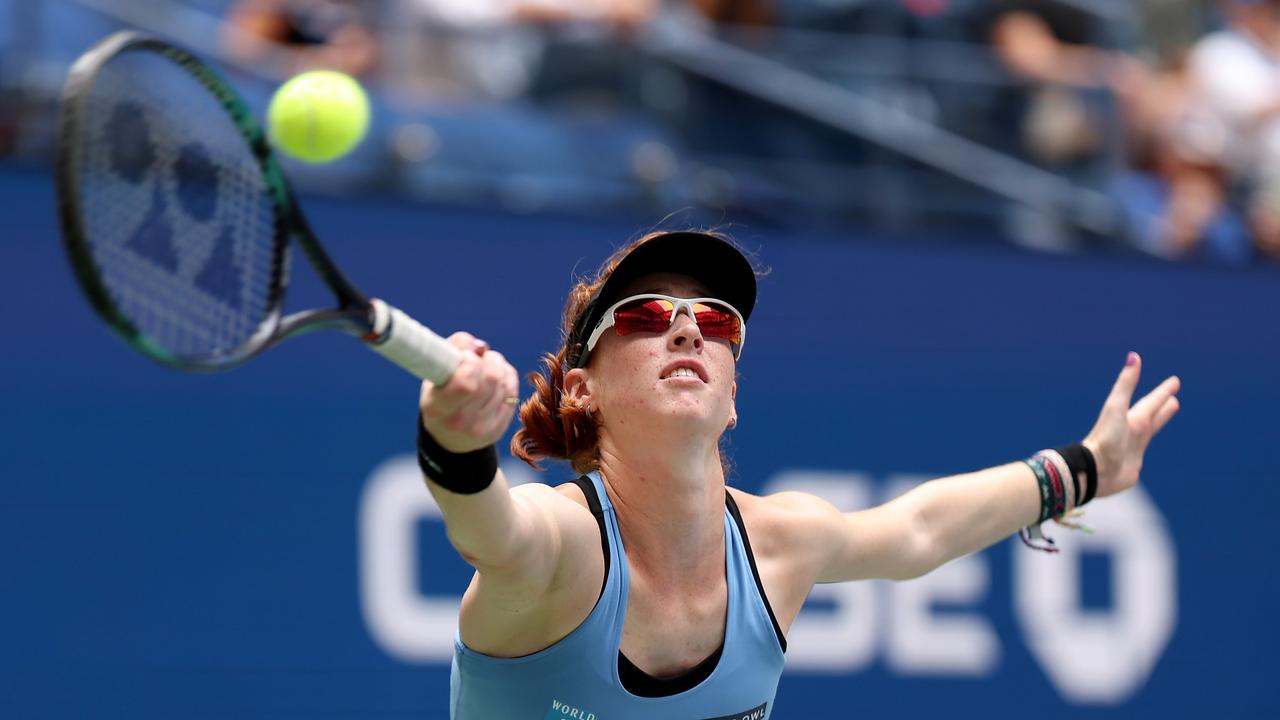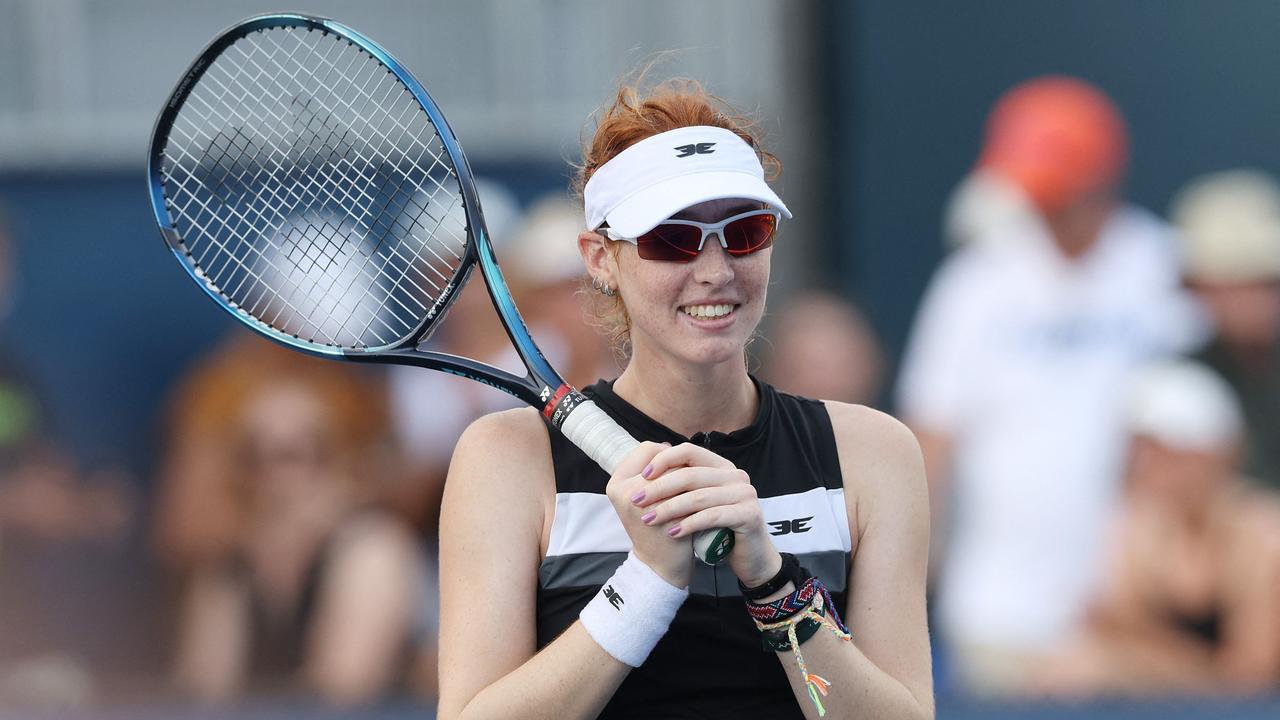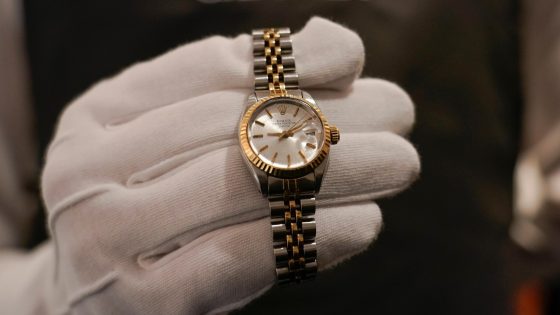Rising Aussie tennis star Maya Joint has been forced into a brutal decision, choosing her education over her US Open prizemoney.
The 18-year-old wunderkind went all the way through qualifying before stunning German former world No. 27 Laura Siegemund 6-4 7-5 in the first round of the main draw.
Watch selected NRL, AFL, SSN games plus every F1 qualifying session and race live in 4K on Kayo. New to Kayo? Start Your Free Trial today.
But a US Open fairytale was extinguished in the second round by 14th seed American Madison Keys in a 6-4 6-0 win.
The stunning result saw Joint earn $US140,000 ($A210,000) in prizemoney and she also rose 24 rankings places to world No. 111, Australia’s second highest ranked woman behind only world No. 101 Daria Saville.
But the American-born Aussie, who switched her national allegiance to Australia qualified by her father Michael, a former professional squash player from Melbourne, is currently attending the University of Texas for a psychology degree.
She missed the first week of classes due to her performance in New York.
Under the National Collegiate Athletics Association (NCAA) rules, college students are forbidden from accepting prizemoney beyond “actual an necessary” expenses.
NCAA rules state: “In tennis, prior to full-time collegiate enrolment, an individual may accept up to $10,000 per calendar year in prize money based on his or her place finish or performance in open athletics events (events that are not invitation only).
“Once the individual has reached the $10,000 limit in a particular year, he or she may receive additional prize money on a per-event basis, provided such prize money does not exceed the individual’s actual and necessary expenses for participation in the event.”
Currently another student and tennis player Reese Brantmeier is suing the NCAA over the rules with Joint joining the action last week in a bid to get a preliminary injunction that would allow her and other college athletes to claim their prizemoney until the ruling is made.
Joint’s declaration included the line: “If I am forced to forfeit these funds, I am not aware of any means by which I will be able to recover payment of these funds from the USTA.”
But as US Open rules require players to inform the US Tennis Association over whether they will accept or forfeit their prizemoney by the end of the tournament, and the court didn’t rule in time, Joint chose her college career over her big windfall.
A USTA spokesperson told the Washington Post earlier in the week that the prizemoney rule had been in place for some time.
“While we understand and are empathetic to Ms. Maya’s situation, it would be unfair and inequitable to change our practice or grant exceptions to these rules in the middle of a tournament after others have already made their decisions and submitted their paperwork based on the long standing practice,” the statement read.
The Washington Post reported that the NCAA declined to comment on the situation but Yahoo Sports reported that the NCAA was considering changes to its prizemoney rules.

Joint’s attorney Jason Miller told The Post: “The money is gone — it’s immensely disappointing.
“A lot of these elite tennis players, elite swimmers, track athletes, whatever, they grew up training alone all the time.
“They’ve competed all over the world. She has worked her butt off. The thing that she wants as much as anything, maybe more than anything, is the college experience.
“She wants to be in her dorm room. She wants to wear the burnt orange. She wants to be part of a team.
“Those are all intangibles that don’t translate to a dollar. What is it worth to you to be able to play with your peers, to be able to celebrate a win? Or having people support you when you’re going through a difficult time?”
“She’s not choosing that over a little bit of money. She is choosing that over a ton of money. She’s made a lot of money in the last year.”

The WTA has Joint’s career winnings at $280,491, of which she’s made $270,816 this year so far.
After her round one win, Joint said she was leaning towards going back to school.
“I decided a long time ago that I wanted to go to college and I wasn’t really expecting to get this far (in tennis),” she said.
“If I go to college, then I get my scholarship spot. If I decide to go pro in the meantime, I can always come back on scholarship, which is a big deal.”
Source Agencies

